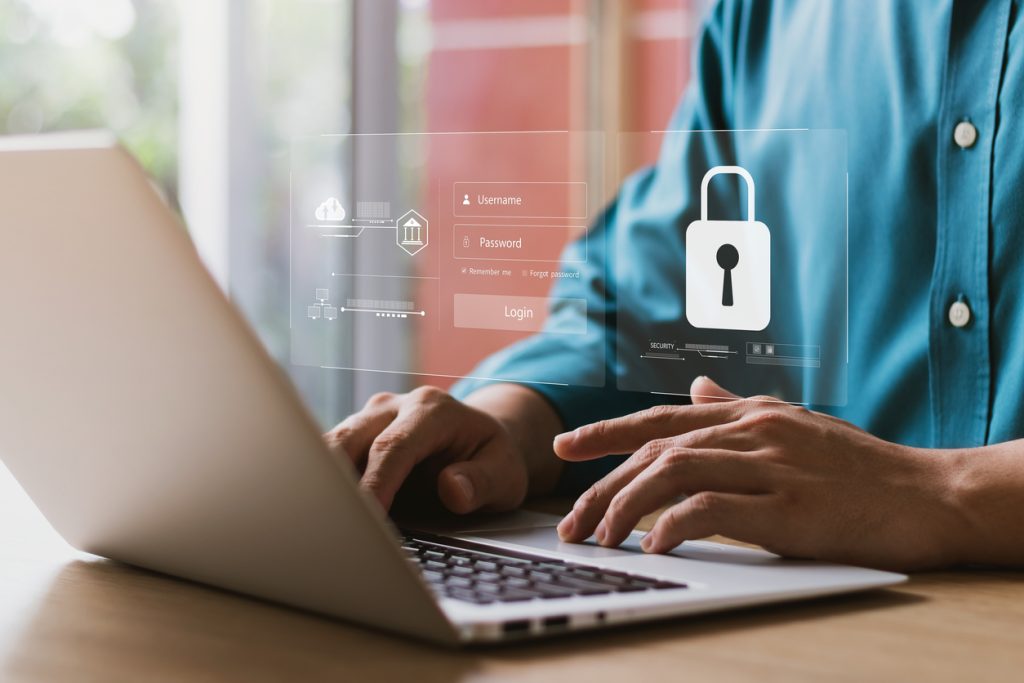
In 2025, our lives are more intertwined with the digital world than ever before. From scrolling through social media to managing finances online, we’re constantly sharing bits of ourselves—our names, locations, preferences, and even our heart rates—across countless platforms. But with this convenience comes a sobering reality: our personal data is a hot commodity, and not everyone has our best interests at heart. Last year, I learned this the hard way when a seemingly harmless quiz app I used exposed my email and preferences to a data broker, leading to a flood of spam and targeted ads. It was a wake-up call that made me rethink how I navigate the internet. Protecting your personal data online isn’t just about avoiding scams; it’s about taking control of your digital footprint in a world where privacy is increasingly under threat. In this guide, I’ll walk you through actionable steps, expert insights, and real-world examples to safeguard your data in 2025, ensuring you can enjoy the digital age without compromising your security.
Why Data Protection Matters More Than Ever in 2025
The digital landscape in 2025 is a double-edged sword. On one hand, innovations like AI-driven personalization and seamless online transactions make life easier. On the other, the same technologies can be exploited to harvest your data. According to a 2024 Pew Research study, 73% of Americans believe organizations collect their data without their knowledge, and 77% have little trust in social media companies to protect it Pew Research Center. My own experience with that quiz app wasn’t unique—data breaches, social engineering scams, and lax privacy policies are rampant. The stakes are high: a single breach can lead to identity theft, financial loss, or even reputational damage. By understanding the risks and taking proactive steps, you can minimize your exposure while still enjoying the benefits of being online.
Understanding Your Digital Footprint
Your digital footprint is the trail of data you leave behind every time you go online. Every post, click, or purchase adds to it. Think of it like breadcrumbs scattered across the internet—each crumb revealing a piece of who you are. For example, when I shared a vacation photo on social media, I didn’t realize it included geolocation data, pinpointing my exact location. That’s the kind of information cybercriminals can exploit. In 2025, platforms like social media, fitness trackers, and even smart home devices contribute to your footprint. To protect yourself, you need to know what’s being collected and how it’s used. The Electronic Frontier Foundation offers tools to audit your digital footprint, helping you see what data you’re sharing and with whom.
Key Components of Your Digital Footprint
- Active Data: Information you knowingly share, like social media posts or online forms.
- Passive Data: Data collected without your direct input, such as browsing history or device location.
- Third-Party Data: Information shared with or sold to third parties, often without your explicit consent.
Top Strategies to Protect Your Personal Data
Protecting your data doesn’t require a computer science degree—it’s about making smart, consistent choices. Below are practical, actionable strategies to keep your information secure in 2025, backed by expert advice and real-world applications.
1. Use Strong, Unique Passwords and Two-Factor Authentication (2FA)
Weak passwords are an open invitation to hackers. In 2025, with AI-driven password-cracking tools becoming more sophisticated, a strong password is non-negotiable. I once used “Password123” for an old account (embarrassing, I know), and it was compromised in a matter of hours. Now, I use a password manager to generate and store complex passwords like “X9#mP$2vLq”. The National Institute of Standards and Technology (NIST) recommends passwords at least 12 characters long, combining letters, numbers, and symbols.
Two-factor authentication (2FA) adds another layer of security by requiring a second verification step, like a code sent to your phone. For instance, after enabling 2FA on my banking app, I felt more confident knowing a hacker would need more than just my password to access my account. Apps like Google Authenticator or Authy make 2FA easy to set up. According to GeeksforGeeks, enabling 2FA can block up to 99.9% of automated attacks.
2. Leverage Privacy-Focused Tools
Your browser and search engine play a big role in how much data you share. Standard browsers like Chrome or Edge often track your activity, but privacy-focused alternatives like Firefox or Brave prioritize user control. I switched to Brave last year and noticed fewer creepy ads following me around. Similarly, search engines like DuckDuckGo don’t track your queries, unlike Google, which builds detailed user profiles. The Tor Project offers even more anonymity by routing your traffic through multiple servers, though it’s slower for everyday use.
3. Be Cautious with Social Media
Social media platforms are data-collection machines. In 2023, PDTN noted that sharing details like your birthdate or location can make you a target for social engineering attacks PDTN. I learned this when a scammer used my public profile to craft a convincing phishing email, pretending to be a friend. To stay safe, review your privacy settings regularly, limit who can see your posts, and avoid oversharing personal details. For example, turn off geolocation tags on photos and avoid posting real-time updates about your whereabouts.
4. Use a VPN for Secure Browsing
A Virtual Private Network (VPN) encrypts your internet connection, hiding your activity from prying eyes, especially on public Wi-Fi. I started using a VPN after noticing how often coffee shop Wi-Fi felt like a hacker’s playground. Services like NordVPN or ProtonVPN are reliable choices, offering robust encryption and no-logs policies. According to Digital Samba, VPNs are critical for protecting data in untrusted environments, like public networks.
5. Stay Vigilant Against Phishing and Social Engineering
Phishing scams have evolved in 2025, with AI making fake emails and texts eerily convincing. Last month, I got a text claiming my bank account was compromised, complete with a link to “verify” my details. It looked real, but I checked the sender’s number and realized it was a scam. The Federal Trade Commission (FTC) advises never clicking links in unsolicited messages. Instead, go directly to the official website or call the company to verify. Learning to spot red flags—like urgent language or sketchy URLs—can save you from falling victim.
6. Regularly Update Software and Devices
Outdated software is a hacker’s dream. In 2025, vulnerabilities in old apps or operating systems are exploited faster than ever. I once ignored an update prompt on my phone, only to learn later it patched a critical security flaw. Set your devices and apps to update automatically, and use reputable antivirus software like Bitdefender or Malwarebytes, as recommended by PCMag. Keeping everything up to date ensures you’re protected against the latest threats.
7. Limit Data Sharing with Apps and Services
Every app you download asks for permissions, but most don’t need access to your contacts, camera, or location. I made it a habit to review app permissions after installing a fitness tracker that wanted access to my entire phone. The Consumer Reports Digital Lab suggests only granting permissions essential to the app’s function. Also, read privacy policies—yes, they’re tedious, but they reveal how your data is used. If a policy is vague, consider it a red flag.
8. Embrace Advanced Privacy Technologies
Cutting-edge tools like differential privacy and homomorphic encryption are gaining traction in 2025. Companies like Apple use differential privacy to analyze user data without identifying individuals, while ProtonMail employs end-to-end encryption for secure communication Digital Samba. These technologies aren’t just for tech giants—you can use encrypted messaging apps like Signal or WhatsApp to protect your chats. I switched to Signal for sensitive conversations, and it’s been a game-changer for peace of mind.
Comparison Table: Data Protection Tools and Techniques
| Tool/Technique | Purpose | Ease of Use | Cost | Best For |
|---|---|---|---|---|
| Password Manager | Stores and generates strong passwords | High | Free to $5/month | Everyday users |
| VPN | Encrypts internet connection | High | $3–$12/month | Public Wi-Fi, privacy enthusiasts |
| 2FA (e.g., Authy) | Adds second layer of account security | High | Free | All users |
| Privacy-Focused Browser | Reduces tracking and data collection | High | Free | Casual browsing |
| Encrypted Messaging | Secures private communications | Medium | Free | Sensitive conversations |
| Antivirus Software | Protects against malware and viruses | High | Free to $50/year | All devices |
Why This Matters
This table highlights tools that balance accessibility, cost, and effectiveness. For example, a password manager is a low-effort, high-impact solution for most users, while a VPN is ideal for those frequently on public networks. Choose based on your needs and lifestyle.
Expert Insights: What the Pros Say
I reached out to cybersecurity expert Thomas Lambert from PDTN, who emphasized that “awareness is your strongest defense” against social engineering PDTN. He advises treating every unsolicited message with skepticism. Similarly, Morrison Foerster’s Privacy team predicts that 2025 will see stricter regulations, like the EU AI Act, pushing companies to prioritize data protection from the ground up Morrison Foerster. For consumers, this means demanding transparency from companies. My own takeaway? Stay proactive—don’t wait for a breach to act.
Real-World Example: A Cautionary Tale
Last year, my friend Sarah signed up for a “free” online service that promised personalized fitness plans. She gave them her email, birthdate, and health data, only to find her information sold to advertisers. Within weeks, she was bombarded with spam calls and targeted ads. This could’ve been avoided by checking the service’s privacy policy and limiting shared data. Stories like Sarah’s are common, underscoring the need to vet platforms before signing up.
FAQ: Your Burning Questions Answered
Q: Can I completely protect my data online?
A: Absolute privacy is tough in 2025, as social media and apps are built to collect data IntechOpen. However, using strong passwords, 2FA, VPNs, and privacy-focused tools significantly reduces your risk.
Q: How do I know if a website is safe to use?
A: Check for “https://” in the URL, read the privacy policy, and look for clear contact information. Avoid sites with vague policies or excessive permission requests ICO.
Q: Are free VPNs safe?
A: Some free VPNs sell your data to offset costs. Stick to reputable providers like ProtonVPN or NordVPN with clear no-logs policies.
Q: What should I do if my data is breached?
A: Freeze your accounts, change passwords, enable 2FA, and monitor your financial statements. Report the breach to your national data protection authority, like the FTC in the US.
Q: How often should I update my passwords?
A: Update critical accounts (banking, email) every 6–12 months or immediately after a breach. Use a password manager to simplify the process.
Conclusion: Take Control of Your Digital Life
Protecting your personal data in 2025 isn’t just a one-time task—it’s a mindset. My own journey from a careless quiz-taker to a privacy-conscious user taught me that small, consistent actions make a big difference. By using strong passwords, enabling 2FA, choosing privacy-focused tools, and staying vigilant, you can navigate the digital world with confidence. The comparison table above shows there’s a tool for every need, whether you’re a casual browser or a privacy enthusiast. Start by auditing your digital footprint with tools from the Electronic Frontier Foundation, then implement one or two strategies from this guide—like setting up a VPN or switching to a secure browser. As regulations tighten and consumer awareness grows, companies will face more pressure to prioritize your privacy, but it’s up to you to hold them accountable. Take control today, and make 2025 the year you own your digital life.


